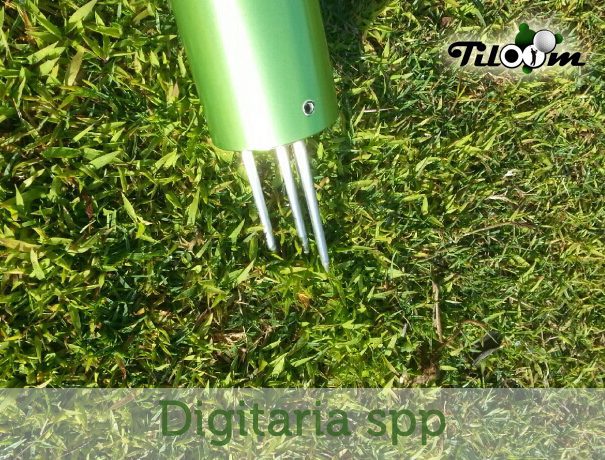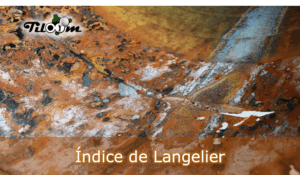Today we will talk about the Crabgrass (Digitaria spp.), commonly referred to as "goosefoot". The Digitaria spp. can become a problematic infection on agrostis and bermudagrass greens.
There are currently no options for post-emergent control on cool-climate turfgrass greens. Only certain pre-emergent herbicides can be used. Bensulide (Bensumec) is indicated for this, although there are records with uncertain results in some regions and control of some perennial poa biotypes does not occur, and even yellowing can occur for several weeks on poa greens, (P.H Dernoeden, Creeping Bentgrass Managenent 2002).
The mixture of bensulide and oxadiazinon (Scott's Goosegrass/Crabgrass Preventer) was first used in 1980, resulting in excellent control of digittaris and Eleusine indicaalthough some slight discolouration may occur during the month following treatment, although recovery is rapid.
Both treatments, Bensulide and the mixture with oxadiazinon, should be carried out in early spring, a week or two before the rest of the preventive treatments on the golf course.
Earlier timing of treatment does not affect the level of control, but minimises the potential for yellowing or residual power to affect reseeding.
There are also dithiopyre-based granulates formulated since 1991 for use on agrostis, which control pre-emergence of digitaria and early post-emergence. In addition to digitaria, dithiopyre also controls weed Eleusine indica, in pre-emergence but not in post-emergence.
Dithiopyre should be applied in early spring, due to its residual effect. It can be applied as early as February or March without loss of effectiveness. Note that some adverse effects have been recorded in treatments where overlapping spraying occurred, especially on poorly drained greens or greens with low root levels. The adverse effects produced can be purple discolouration and reduced density, lasting up to one month. Late post-emergence treatments, around June, with temperatures above 27°C, can severely damage poa and agrostis greens. Post-emergence use of dithiopyre for fairways or tees can be risky and is therefore not recommended. Always check that the herbicide label recommends use on greens. It is not recommended for use on poa annua.
Treatment of antegreens is vital to prevent Digitaria entering and infesting the greens. Pendimethalin is a pre-emergent herbicide normally used for this purpose on agrostis with mowing heights above 15 mm, and will also give good results on Bermuda.
The herbicide phenoxaproc-ethyl is suitable for post-emergence control of Digitaria and Eleusine on agrostis (especially those which form the tramlines, i.e. in high mowings). Furthermore, its effect is optimal irrespective of the vegetative state of the Digitaria. Recommended doses are in the range of 0.036 to 0.045 kg/ha of active ingredient. Its most toxic effects may occur in the temperature range of 21-27°C, and less so in the 29-33°C range, and it also has more damaging potential in wet than in dry periods. Treatments should be made at the physiological stage of 1 to 3 Digitaria leaves and repeated every 2 to 3 weeks. Broadleaf treatments are antagonistic, and should not be used with each other.
Do not carry out broadleaf treatments together with fenoxaproc-ethyl. It is advisable not to carry out broadleaf treatments such as 2,4-D and MCPP, and under no circumstances in the summer on agrostis, due to possible phytotoxicity.
Quinclorac is also an option for Digitaria control, and even for broadleaf control, although its effect is reduced when the vegetative stage of the weed is very developed. It is not recommended for use on greens and agrostis rings or fine fescues.
In Poa annua tees, Fenoxyprop p-ethil treatments can be used to control Digitaria in its early stages, although efficacy is reduced as summer temperatures rise or with a mixture of phenoxyacetic herbicides. Postemergence treatment of Digitaria in more advanced stages can be done with Quinclorac. Pre-emergent treatments are not recommended in poa annua turf, because they rely on continuous regeneration by germination of its seeds to achieve high standards of grass cover, (J.M. Vargas; A.J. Turgeon, Poa Annua, 2004).
It is important to know the optimal timing of application, calculations can be based on the degree days
For the application of any chemical treatment on the field, the professional responsible must consult the legislation on products permitted in each country and pay special attention if treatments are carried out on greens due to the possible phytotoxicity if the treatment doses are overestimated.








